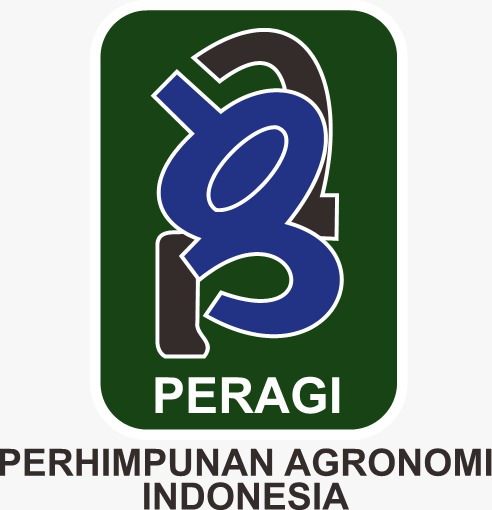The Potential of Endophytic Bacteria in Controlling Cylindrocladium sp., The Cause of Leaf Blight on Eucalyptus pellita Seedlings by In-Vitro
Abstract
Cylindrocladium sp is a fungus that causes leaf blight on Eucalyptus pellita seedlings. Endophytic bacteria are an alternative biological control that can reduce the risk of environmental pollution and reduce resistance by pathogens. This research aims to obtain endophytic bacteria that have potential as biocontrol agents and to characterize isolates that inhibit more than 30%. Testing was carried out using the dual culture method on Potato Sucrose Agar (PSA) media. The results of the antagonism test showed that the endophytic bacterial isolates E320 and E323 were able to form an inhibition zone of more than 30%, namely 38.79% and 41.25% and had the potential to act as biocontrol agents for Cylindrocladium sp., which causes leaf blight on eucalyptus. The characteristics of isolate E320 were that it was able to produce protease, cellulase and siderophore activities, while isolate E323 was only able to produce proteaseDownloads
References
Afzal, I., Shinwari, Z. K., Sikandar, S., & Shahzad, S. (2019). Plant beneficial endophytic bacteria: Mechanisms, diversity, host range and genetic determinants. Microbiological research, 221, 36–49. https://doi.org/10.1016/j.micres.2019.02.00
Agustin, D. A., Abadi, A. L., & Aini, L. Q. (2022). Uji Mekanisme Antagonis Rizobakteri Terhadap Sclerotium rolfsii Penyebab Rebah Semai pada Tanaman Kacang Tanah. Agropross: National Conference Proceedings of Agriculture, 6, 296–307. https://doi.org/10.25047/agropross.2022.300
Amalia, R., Herliyana, E., & Anggraeni, I. (2018). Potensi Trichoderma Sp. dan Gliocladium Sp. sebagai Jamur Antagonis Terhadap Cylindrocladium Sp. Penyebab Penyakit Lodoh Pada Persemaian Secara In-Vitro. Jurnal Penelitian Hutan Tanaman, 5(1), 63-75. https://doi.org/10.20886/jpht.2008.5.1.63-75
Andriani, D. E. S. T. A., & Oktafiyanto, M. F. (2019). Potensi Bakteri Endofit dari Tanaman Paitan Titonia Deversifolia sebagai Biofertilizer dan Biopestisida. JUATIKA: Jurnal Agronomi Tanaman Tropika, 1(2), 84-90.
Anugrah, F. M., & Fitri, W. (2018). Pengaruh fungisida berbahan aktif metalaksil, fenamidone, dan dimetomorf terhadap konidia Peronosclerospora Spp. Isolat Klaten. Jurnal Penelitian Saintek. 23(1). 21-31
Arya, P., Mohanty, P. S., Pandey, A. & Harsh, N.S.K. (2011). Variability in colony morphology and virulence of Cylindrocladium quinqueseptatum isolates causing leaf and seedling blight of eucalyptus. International Journal Science and Nature. 2(2), 198–203.
Chen, S. F., Lombard, L., Roux, J., Xie, Y. J., Wingfield, M. J., & Zhou, X. D. (2011). Novel species of Calonectria associated with Eucalyptus leaf blight in Southeast China. Persoonia, 26, 1–12. https://doi.org/10.3767/003158511X555236
Dunlap, C. A., Kim, S. J., Kwon, S. W., & Rooney, A. P. (2016). Bacillus velezensis is not a later heterotypic synonym of Bacillus amyloliquefaciens; Bacillus methylotrophicus, Bacillus amyloliquefaciens subsp. plantarum and 'Bacillus oryzicola' are later heterotypic synonyms of Bacillus velezensis based on phylogenomics. International journal of systematic and evolutionary microbiology, 66(3), 1212–1217. https://doi.org/10.1099/ijsem.0.000858.
Ernia R. (2020). Seleksi dan karakterisasi bakteri endofit serta senyawa bioaktif yang dihasilkan sebagai pengendali pertumbuhan Fusarium proliferatum. TESIS. Sekolah Pascasarjana Institut Pertanian Bogor. Bogor.
Guevara-Avendaño, E., Carrillo, J. D., Ndinga-Muniania, C., Moreno, K., Méndez-Bravo, A., Guerrero-Analco, J. A., Eskalen, A., & Reverchon, F. (2018). Antifungal activity of avocado rhizobacteria against Fusarium euwallaceae and Graphium spp., associated with Euwallacea spp. nr. fornicatus, and Phytophthora cinnamomi. Antonie van Leeuwenhoek, 111(4), 563–572. https://doi.org/10.1007/s10482-017-0977-5
MarwanH., NusiferaS., & MulyatiS. (2021). Potensi Bakteri Endofit sebagai Agens Hayati untuk Mengendalikan Penyakit Blas pada Tanaman Padi . Jurnal Ilmu Pertanian Indonesia, 26(3), 328-333. https://doi.org/10.18343/jipi.26.3.328
Meliah, S., Sulistiyani, T. R., Lisdiyanti, P., Kanti, A., Sudiana, I. M., & Kobayashi, M. (2021). Antifungal activity of endophytic bacteria associated with sweet sorghum (Sorghum bicolor). Journal of Mathematical and Fundamental Sciences, 53(1), 16–30. https://doi.org/10.5614/J.MATH.FUND.SCI.2021.53.1.2Mori M, M Aoyama, S Doi, A Kanetoshi dan Hayashi. 1997. Antifungal activity of bark extracts of deciduous trees. Holz als und Werkstoff. 55:130-132.
Noumavo, P. A., Agbodjato, N. A., Baba-Moussa, F., Adjanohoun, A., & Baba-Moussa, L. (2016). Plant growth promoting rhizobacteria: Beneficial effects for healthy and sustainable agriculture. African Journal of Biotechnology , 15(27), 1452-1463.
Siregar, B. A., Liantiqomah, D., Siregar, H., Gafur, A & Tjahjono, B. (2022). Screening of endophytic Trichoderma isolates to improve the growth and health of Eucalyptus pellita seedlings. IOP Conference Series: Earth and Environmental Science. 974. 012084. 10.1088/1755-1315/974/1/012084.
Báez-Vallejo, N., Camarena-Pozos, D. A., Monribot-Villanueva, J. L., Ramírez-Vázquez, M., Carrión-Villarnovo, G. L., Guerrero-Analco, J. A., Partida-Martínez, L. P., & Reverchon, F. (2020). Forest tree associated bacteria for potential biological control of Fusarium solani and of Fusarium kuroshium, causal agent of Fusarium dieback. Microbiological research, 235, 126440. https://doi.org/10.1016/j.micres.2020.126440
Widiantini, F., Herdiansyah, A., & Yulia, E. (2017). Biocontrol Potential of Endophytic Bacteria Isolated from Healthy Rice Plant against Rice Blast Disease (Pyricularia oryzae Cav.). KnE Life Sciences, 2(6), 287-295. https://doi.org/10.18502/kls.v2i6.1051
Widiantini, F & Hartati, F. (2020). EndophyticBbacteria origin of healthy rice plants produce antifungal volatile compound inhibited the growth of Pyricularia oryzae Cav., the causal agent of rice blast disease. CROPSAVER - Journal of Plant Protection. 3(1). 31-36. 10.24198/cropsaver.v3i1.28121.
Copyright (c) 2024 Dicky Kurniawan, Fifi Puspita, Budi Tjahjono, Bayo Alhusaeri Siregar, Abdul Gafur

This work is licensed under a Creative Commons Attribution 4.0 International License.
Authors who publish with Jurnal Agronomi Tanaman Tropika (JUATIKA) agree to the following terms:
Authors retain copyright and grant the Jurnal Agronomi Tanaman Tropika (JUATIKA) right of first publication with the work simultaneously licensed under a Creative Commons Attribution License (CC BY 4.0) that allows others to share (copy and redistribute the material in any medium or format) and adapt (remix, transform, and build upon the material for any purpose, even commercially) with an acknowledgment of the work's authorship and initial publication in Jurnal Agronomi Tanaman Tropika (JUATIKA).
Authors are able to enter into separate, additional contractual arrangements for the non-exclusive distribution of the journal's published version of the work (e.g., post it to an institutional repository or publish it in a book), with an acknowledgment of its initial publication in Jurnal Agronomi Tanaman Tropika (JUATIKA). Authors are permitted and encouraged to post their work online (e.g., in institutional repositories or on their website) prior to and during the submission process, as it can lead to productive exchanges, as well as earlier and greater citation of published work.







 More Information
More Information



